Providing an essential link between tenants and landlords, Rental Verification Forms represent a cornerstone of the property leasing process. These versatile documents, particularly in their template form, simplify the often complex dialogue about rental histories and lend a measure of professionalism to each transaction.
Weaving a narrative of trust and clarity, they are indispensable tools that bring efficiency to the rental sector. In this article, we will explore the importance and nuances of Rental Verification Form templates, showcasing their function and utility in the intricate dance between lessee and lessor.
Table of Contents
What Is A Rental Verification Form?

A Rental Verification Form is a vital document used by landlords, property managers, and leasing agents to confirm a tenant’s rental history. Essentially, it’s a record of the tenant’s past behavior in rental situations, providing crucial information such as the duration of tenancy, timely payment of rent, and overall adherence to rental agreement conditions.
It may also include details like whether the tenant had any instances of causing significant property damage or if there were complaints from neighbors. This information becomes a significant consideration for prospective landlords or property management companies when screening potential tenants, as it helps them assess the risk associated with renting to a particular individual. As such, a Rental Verification Form serves as a testament to a tenant’s credibility and responsibility.
Rental Verification Form Templates
Rental Verification Form templates are an invaluable asset for any landlord or property manager. These free, printable templates simplify the process of verifying tenant history and current rental status. Each template offers a clear and structured format for landlords to confirm important tenant details such as payment history, rental dates, and more.
With their user-friendly design, these Rental Verification Form templates ensure a standardized approach to tenant screening. They contribute to an effective and efficient tenant verification process, proving their worth in the realm of property management.
Why Does Rental History Verification Matter?
Rental history verification matters for several compelling reasons, primarily because it provides critical insight into a tenant’s past behaviors and patterns in rental situations, serving as a predictor of future behavior.
- Firstly, it gives landlords a sense of security and trustworthiness about the prospective tenant. If a tenant has a history of timely rent payments, it can indicate a higher probability that they will continue to pay on time in the future, ensuring a steady income stream for the landlord.
- Secondly, it provides information about the tenant’s respect for property rules and maintenance. Tenants who have maintained their past residences properly and adhered to property rules are likely to do the same with future rentals.
- Thirdly, it reduces potential conflicts and misunderstandings. If a tenant has a positive rental history with no evictions or disputes, it suggests that they are likely to have good relations with landlords and neighbors moving forward.
- Finally, verifying rental history reduces the risk of property vacancies. A tenant with a solid rental history is often more likely to fulfill their lease term, avoiding the cost and inconvenience of finding a new tenant prematurely.
Benefits of Having Verification Forms
Rental Verification Forms offer numerous benefits to both landlords and tenants, helping to streamline the leasing process and minimize potential risks. Here are fifteen noteworthy benefits:
- Trustworthiness Verification: It helps landlords determine if potential tenants have a track record of abiding by rental agreement terms and conditions.
- Payment History: It provides an overview of the tenant’s rent payment history, allowing landlords to identify any patterns of late payments or defaulting.
- Property Maintenance: It gives insights into the tenant’s ability and willingness to maintain and respect the property.
- Minimizing Legal Hassles: By revealing any past disputes or evictions, it helps landlords avoid potential legal complications in the future.
- Preventing Property Damage: It allows landlords to screen out tenants who have a history of causing substantial property damage.
- Enhancing Neighborhood Peace: By flagging any issues with past noise complaints or neighbor disputes, it helps maintain a harmonious living environment for all residents.
- Reduction of Vacancies: It assists in finding reliable tenants who are likely to fulfill their lease term, reducing turnover and vacancies.
- Insurance Purposes: Some insurance companies require rental history as part of their coverage assessment, making this form a necessary document.
- Reference Checks: It serves as a reliable reference check, supplementing information provided by the tenant.
- Streamlining the Screening Process: It brings efficiency to the tenant screening process, standardizing the information gathered for review.
- Tenant’s Credibility: It establishes a prospective tenant’s credibility, particularly useful for tenants with little to no credit history.
- Financial Security: By ensuring that potential tenants can consistently pay rent, it promotes the financial security of the rental business.
- Standardization of Information: It provides a standard format for obtaining rental history information, making comparisons easier across various potential tenants.
- Supports Informed Decisions: It offers a robust tool for making informed leasing decisions based on factual historical data.
- Better Communication: By setting clear expectations from the beginning, it fosters better communication between the tenant and the landlord, thereby preventing misunderstandings later.
Rental Verification Form vs. Landlord Verification Form vs. Tenant Verification Form
Understanding the nuances between a Rental Verification Form, Landlord Verification Form, and Tenant Verification Form can be crucial in the leasing process. Here’s a detailed comparison of these three important documents.
- Rental Verification Form: This document is typically used to gather comprehensive data on a tenant’s rental history. It’s filled out by a current or previous landlord upon the request of a prospective landlord or property management company. Key information includes the duration of the lease, timeliness of rent payments, care of the property, adherence to rules, any complaints or disputes, and reasons for ending the previous lease. The form essentially serves as a character reference for the tenant from a landlord’s perspective.
- Landlord Verification Form: This is similar to a Rental Verification Form, but its focus extends beyond the tenant’s rental history. While it does include information about a tenant’s behavior and payment history, it also aims to confirm the legitimacy of the landlord or the property management company. This might include details such as ownership of the property, existence of any mortgage, or landlord’s history in property management. It’s usually used when the tenant wants to verify the credibility of a potential landlord or when third parties (such as banks or government agencies) need to confirm the landlord’s identity or ownership.
- Tenant Verification Form: This form is primarily utilized to verify a potential tenant’s identity and background. It typically requires information about the tenant’s employment status, income, credit history, criminal records, and personal references. It may be used in conjunction with a rental application to allow landlords to screen potential tenants and determine their suitability for a lease. It’s more focused on the tenant’s overall credibility, not just their rental history.
- In summary, while all three forms serve a common goal of ensuring a transparent and secure leasing process, each one has a specific focus. A Rental Verification Form scrutinizes the tenant’s past rental behavior, a Landlord Verification Form authenticates the landlord’s credibility, and a Tenant Verification Form provides a broader look at the tenant’s background and credibility beyond their rental history. This way, each document provides a unique lens through which to evaluate the leasing arrangement, making each one a crucial piece of a comprehensive screening process.
How to verify the details of your applicants
Verifying the details of your rental applicants is a crucial step in the tenant screening process. It allows landlords to confirm the information provided and ensure that they are leasing to reliable and responsible tenants. Here’s a detailed step-by-step guide to help you in the process:
Rental Application Form
Start by having all potential tenants complete a comprehensive rental application form. This form should request necessary information such as full name, current and previous addresses, employer details, income level, and personal references.
Consent for Background Checks
Have the applicant sign a consent form to conduct a background check. Background checks can reveal information about the applicant’s criminal history, if any, and provide a broader view of their character and reliability.
Employment Verification
Verify the applicant’s employment status and income. This can be done by contacting the employer directly or requesting recent pay stubs or tax returns. This step is important to ensure the tenant has the financial capacity to pay the rent consistently.
Credit Check
Perform a credit check to review the applicant’s credit history. A credit check will provide information on their past financial behaviors, including any late payments, bankruptcies, or substantial debt, which might impact their ability to pay rent.
Landlord References
Contact the applicant’s previous landlords or property managers. These individuals can provide firsthand insight into the applicant’s behavior as a tenant. Ask about the timely payment of rent, care of the property, any rule violations or complaints, and whether they would rent to this tenant again.
Personal References
Reach out to the personal references provided. While personal references may be biased, they can still give valuable insight into the applicant’s character and reliability.
Rental Verification Form
If applicable, use a Rental Verification Form for previous landlords to fill out. This form provides a standardized way to gather information about the tenant’s rental history.
Meet with the Applicant
If possible, arrange a face-to-face meeting or video call with the applicant. This can give you an impression of the applicant’s character and behavior that paper forms might not convey.
Trust Your Instincts
Lastly, trust your instincts. If something doesn’t feel right or seems too good to be true, it may warrant further investigation.
What if a tenant doesn’t have a rental history?
If a potential tenant doesn’t have a rental history, it doesn’t necessarily mean they will be a problematic tenant. It could simply mean they are first-time renters, perhaps recent graduates, immigrants, or individuals who previously owned their home. In such situations, landlords can rely on other checks to verify the tenant’s reliability. Here’s what you can do:
- Employment Verification: Check the tenant’s employment status and income. A steady job and sufficient income to cover the rent can be a strong indicator of their ability to make rent payments consistently.
- Credit Check: Perform a credit check to gauge the tenant’s financial responsibility. If they have a good credit score and no major financial issues, it can demonstrate their capability of managing finances, which includes paying rent on time.
- References: Ask for personal references, preferably from employers, teachers, or other non-family members who can vouch for the tenant’s character and reliability.
- Guarantor or Co-signer: Consider requiring a guarantor or co-signer for the lease. This provides an added layer of security, as the guarantor or co-signer will be financially responsible if the tenant fails to pay rent.
- Proof of Bill Payments: Request proof of regular bill payments like utilities, cell phone bills, or car payments. Timely payment of these can indicate financial responsibility.
- Meeting the Tenant: A face-to-face meeting can also give you a sense of the tenant’s character and trustworthiness. Trust your instincts but ensure you are not unfairly discriminating.
- Higher Security Deposit: Some landlords choose to require a higher security deposit as a precaution. However, be aware that this must be in compliance with local and state laws regarding maximum deposit amounts.
How to Make a Rental Verification Form
Creating a Rental Verification Form involves capturing the right information to evaluate a potential tenant’s rental history accurately. Here’s a step-by-step guide on how to make an effective Rental Verification Form:
Step 1: Header Information: Start with a header that includes the title “Rental Verification Form.” Include your company name and logo, if applicable, for a professional touch.
Step 2: Applicant’s Authorization: Include a section where the tenant gives written consent for you to contact their current or previous landlords for information. This is a legal requirement in many jurisdictions.
Step 3: Tenant’s Personal Information: Include fields for the tenant’s full name, current address, and contact information.
Step 4: Landlord’s Information: Create sections for the landlord’s name, address, and contact information. If a property management company was involved, ask for their details as well.
Step 5: Rental History Details: Designate sections for key information such as the address of the rented property, duration of lease, monthly rent amount, and reason for leaving.
Step 6: Payment History: Include questions about the tenant’s payment history. Was the rent paid on time? Were there any instances of bounced checks or non-payment?
Step 7: Property Maintenance and Rule Compliance: Ask about the tenant’s maintenance of the property. Did they cause any damage beyond normal wear and tear? Did they follow the rules of the property and handle responsibilities like garbage disposal and noise control well?
Step 8: Neighbor Relations: Include a question about whether the tenant was respectful to neighbors and whether there were any complaints or disputes.
Step 9: Lease Violations or Evictions: Ask if the tenant had any lease violations or if they were ever evicted.
Step 10: Re-renting Question: Include a question asking if the previous landlord would rent to this tenant again, which can give a clear indication of the tenant’s overall reliability.
Step 11: Landlord’s Signature: Finally, leave a space for the previous landlord’s signature and date, validating the information provided.
FAQs
Who typically fills out a Rental Verification Form?
A Rental Verification Form is usually completed by the tenant’s current or previous landlord. This person is responsible for providing accurate information about the tenant’s rental history, payment record, and any other relevant details.
Is a Rental Verification Form a legally binding document?
A Rental Verification Form is not typically a legally binding document. Its purpose is to provide factual information about a tenant’s rental history, which can assist landlords in their decision-making process. However, the information provided in the form should be truthful and accurate.
Can a tenant refuse to provide a Rental Verification Form?
While tenants have the right to refuse to provide a Rental Verification Form, it may raise concerns for potential landlords. Landlords often rely on this information to evaluate a tenant’s reliability and determine if they are a suitable candidate. If a tenant refuses to provide a Rental Verification Form, it may negatively impact their chances of being approved for a rental property.
Can a landlord contact previous landlords without a Rental Verification Form?
Yes, a landlord can contact previous landlords directly without a Rental Verification Form. However, the form serves as a convenient tool for collecting necessary information in a standardized format. If a tenant does not provide a Rental Verification Form, the landlord may resort to contacting the previous landlords through other means, such as phone calls or emails.
Are there any legal restrictions on the information that can be requested on a Rental Verification Form?
Yes, there may be legal restrictions on the information that can be requested on a Rental Verification Form. Landlords must comply with fair housing laws and regulations, which prohibit discrimination based on factors such as race, color, religion, sex, national origin, familial status, or disability. Landlords should avoid requesting information that may be considered discriminatory or unrelated to a tenant’s qualifications.
Can a tenant review the information provided by their previous landlord on the Rental Verification Form?
In most cases, tenants do not have the right to review the information provided by their previous landlord on the Rental Verification Form. The form is typically completed by the landlord and shared with the prospective landlord. However, tenants can request a copy of the completed form from the prospective landlord to verify the accuracy of the information provided.



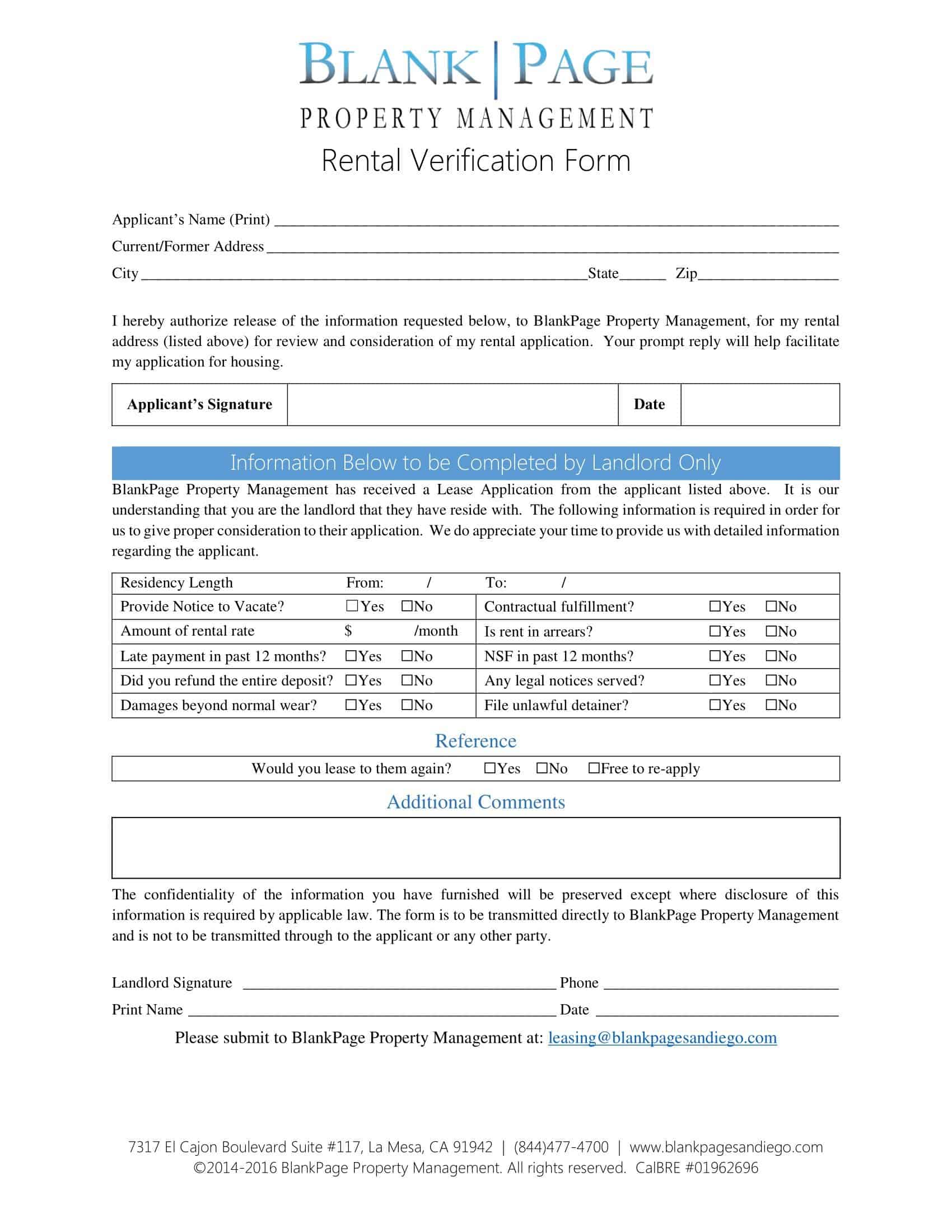


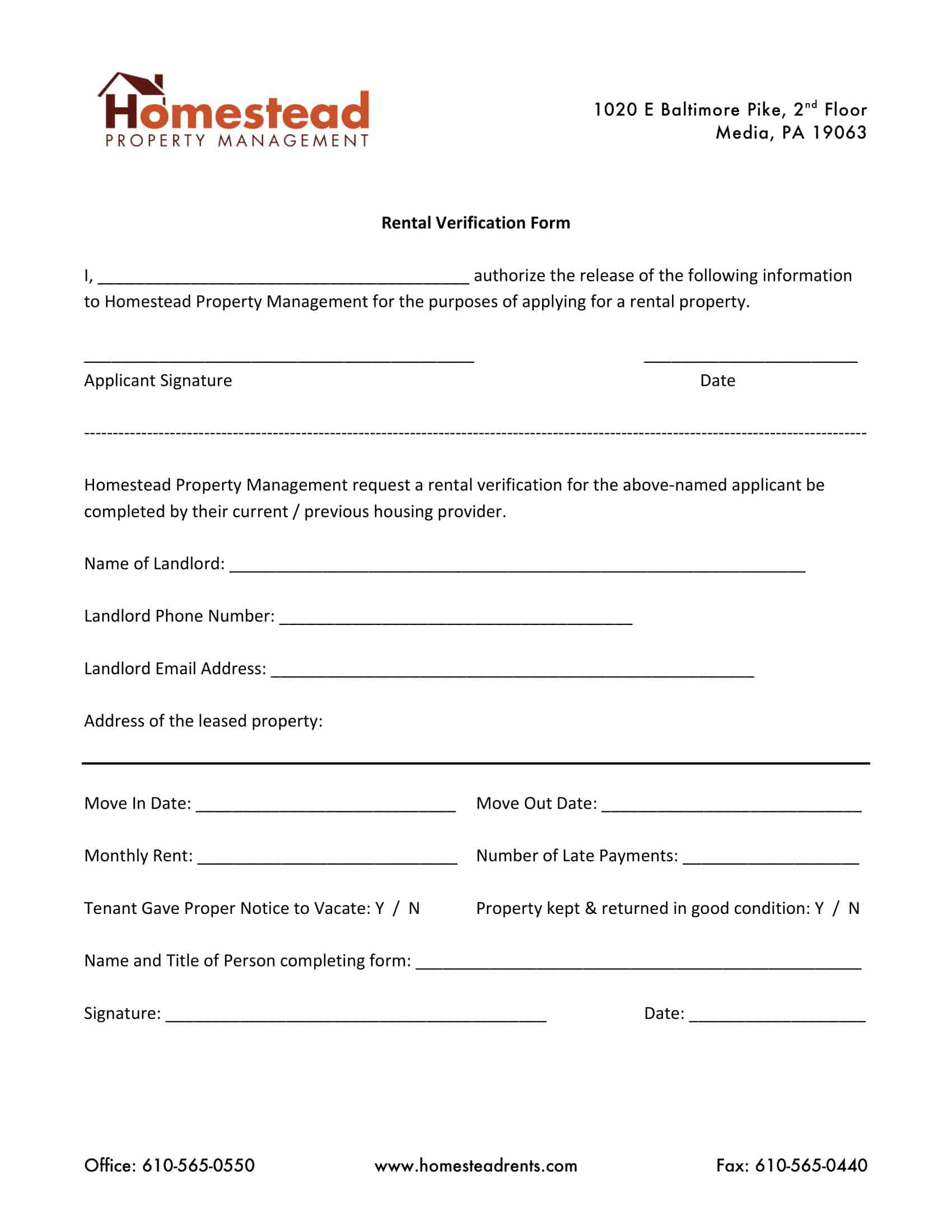


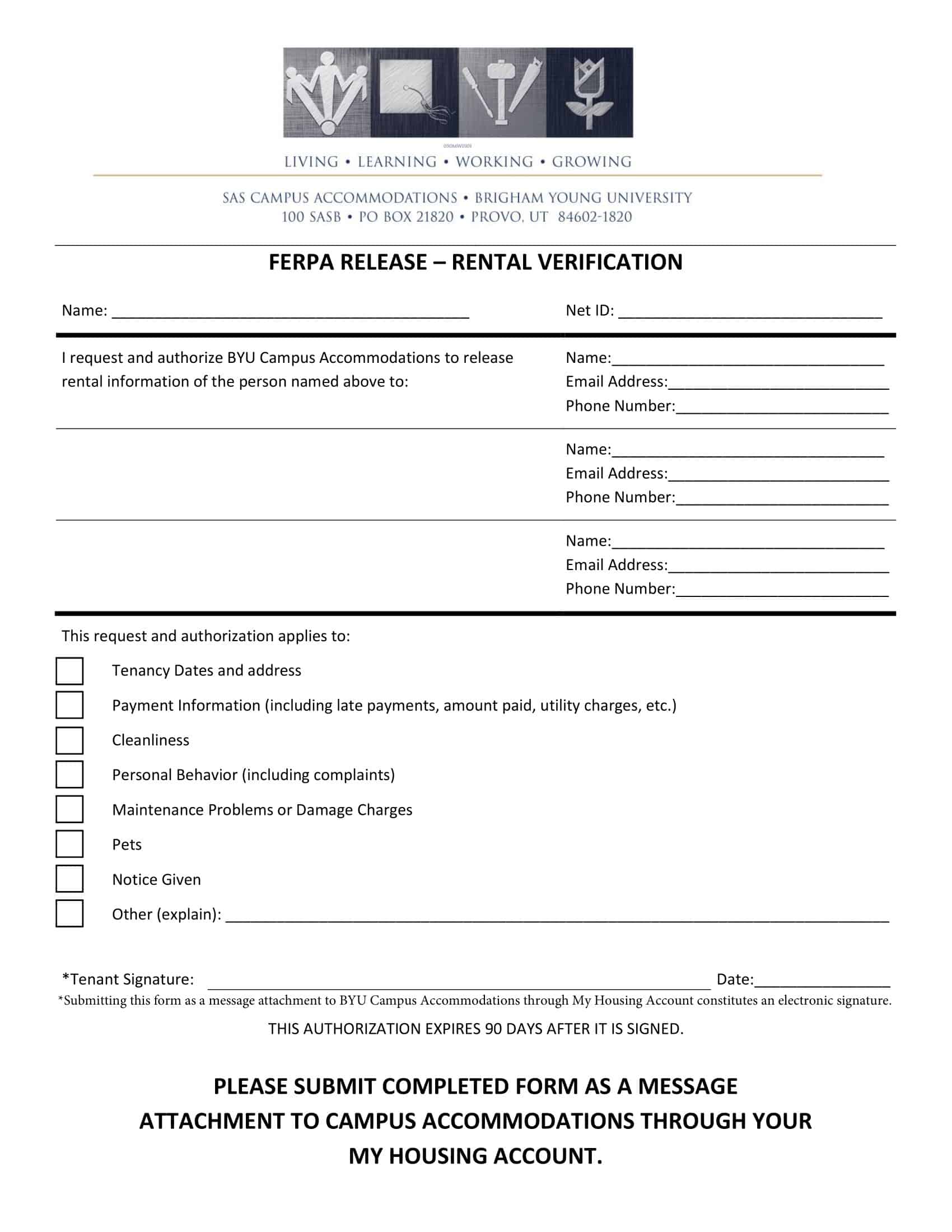


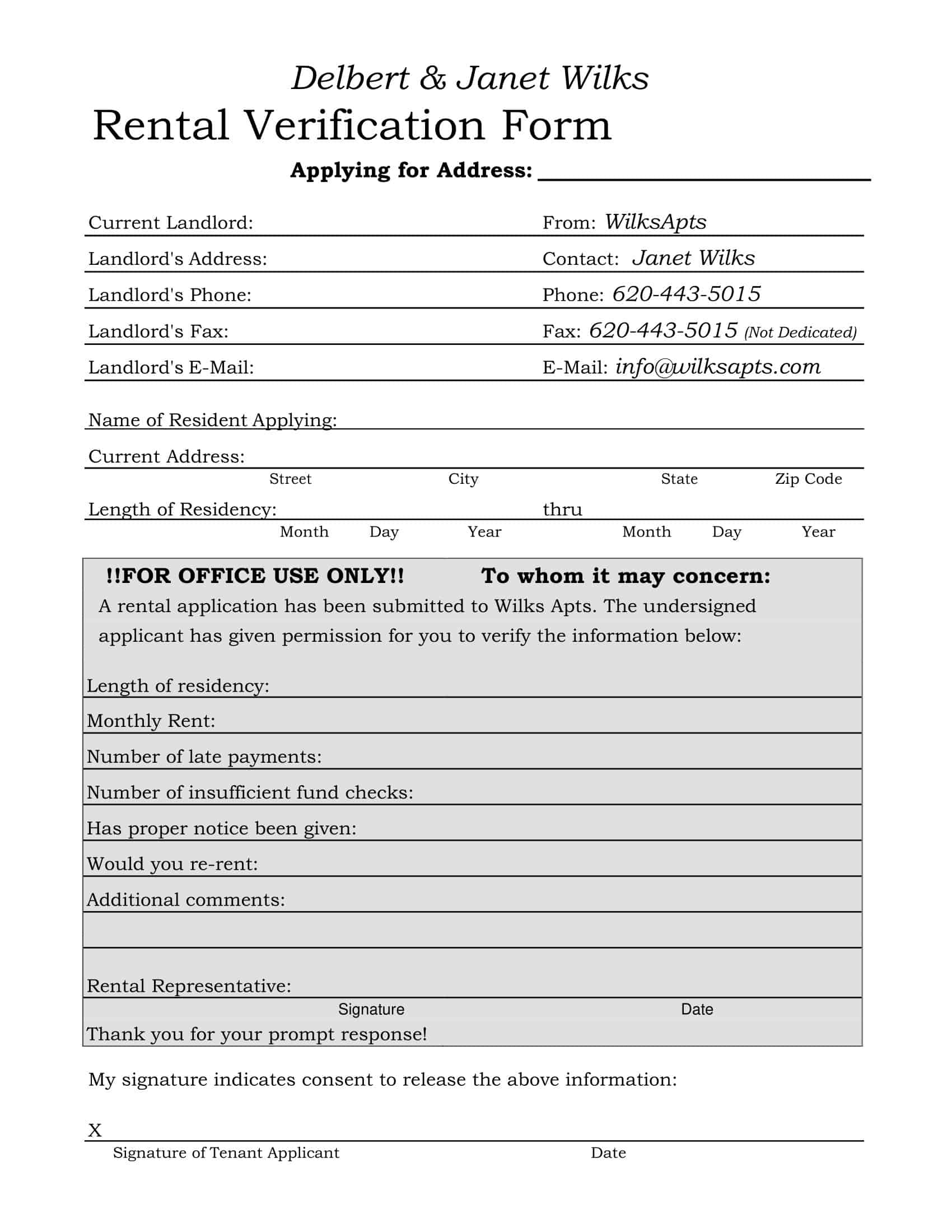

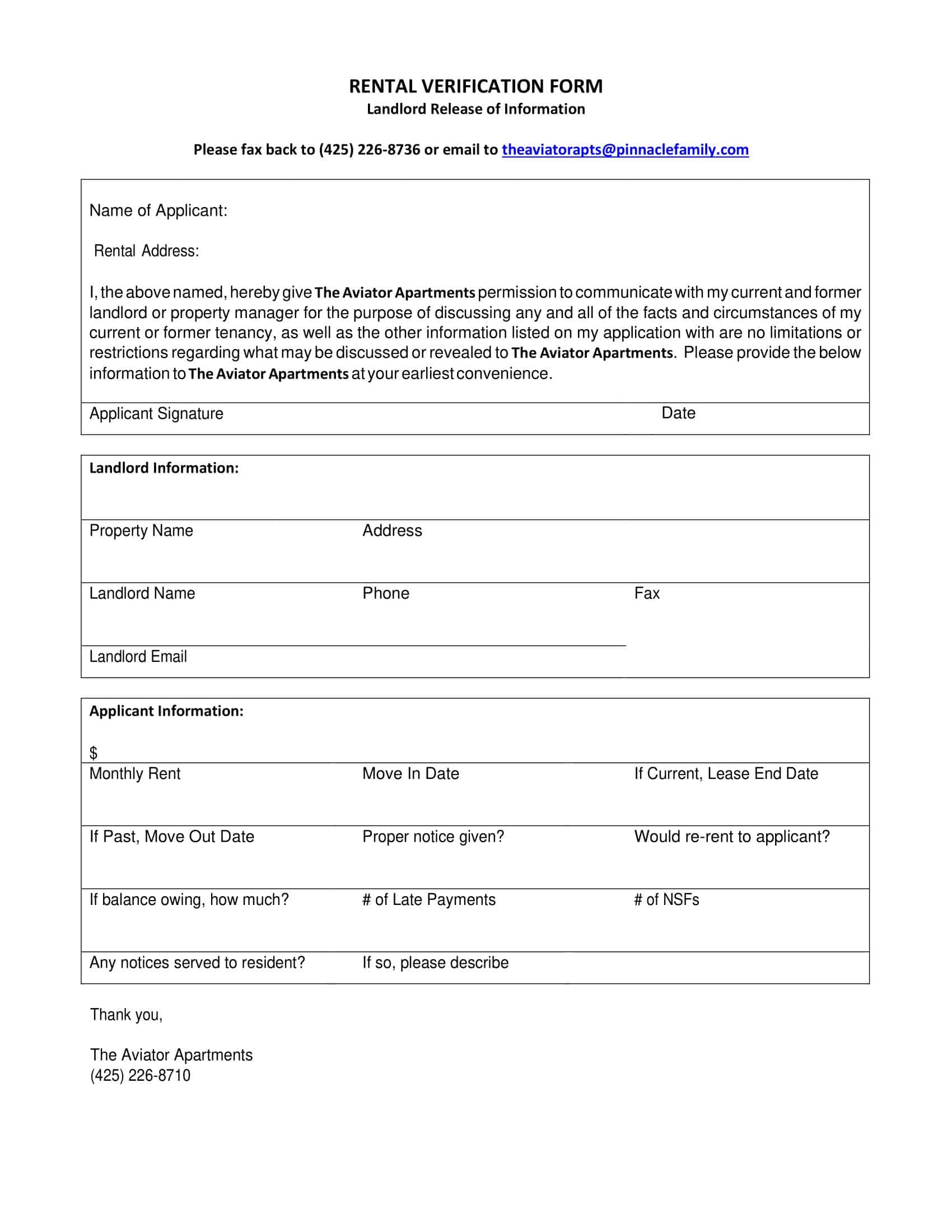
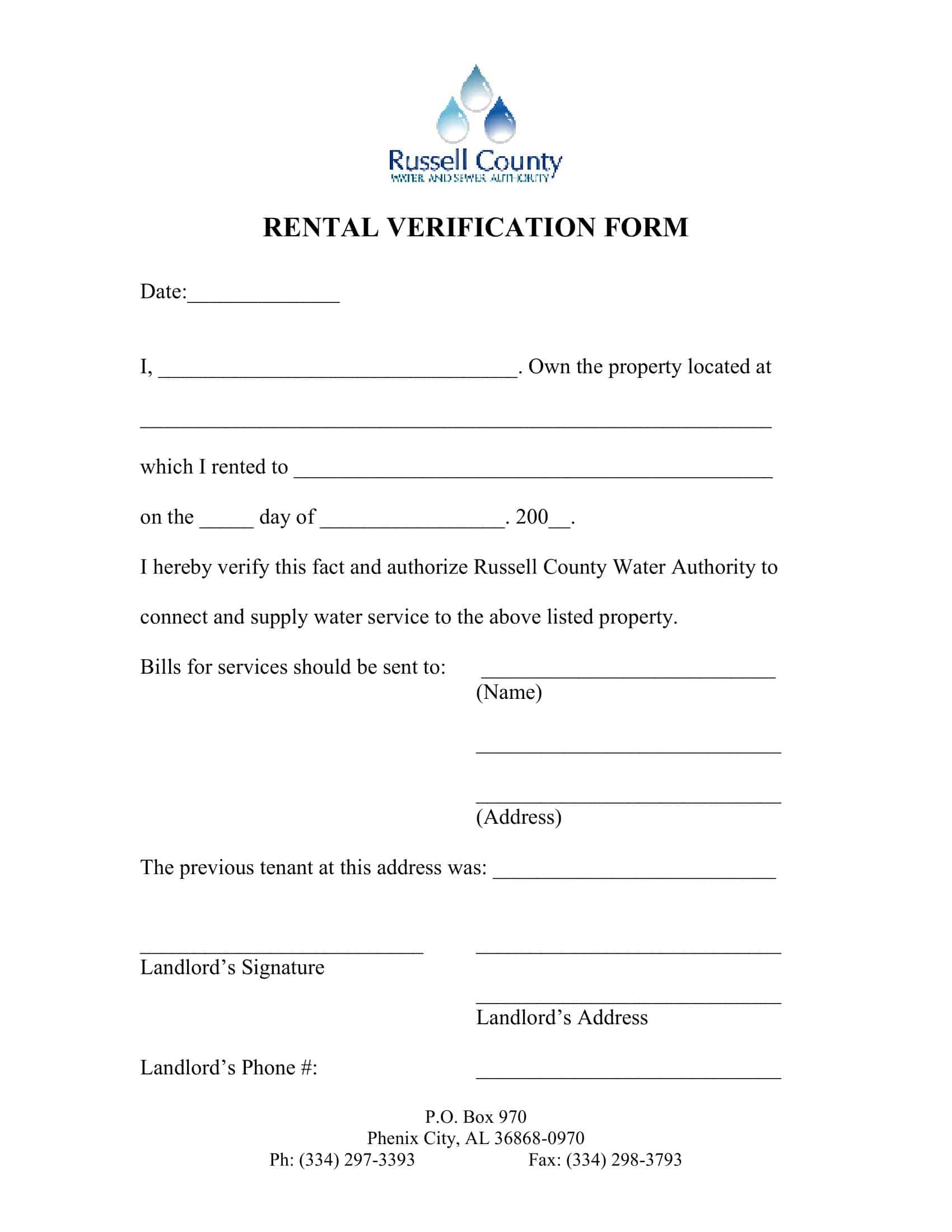







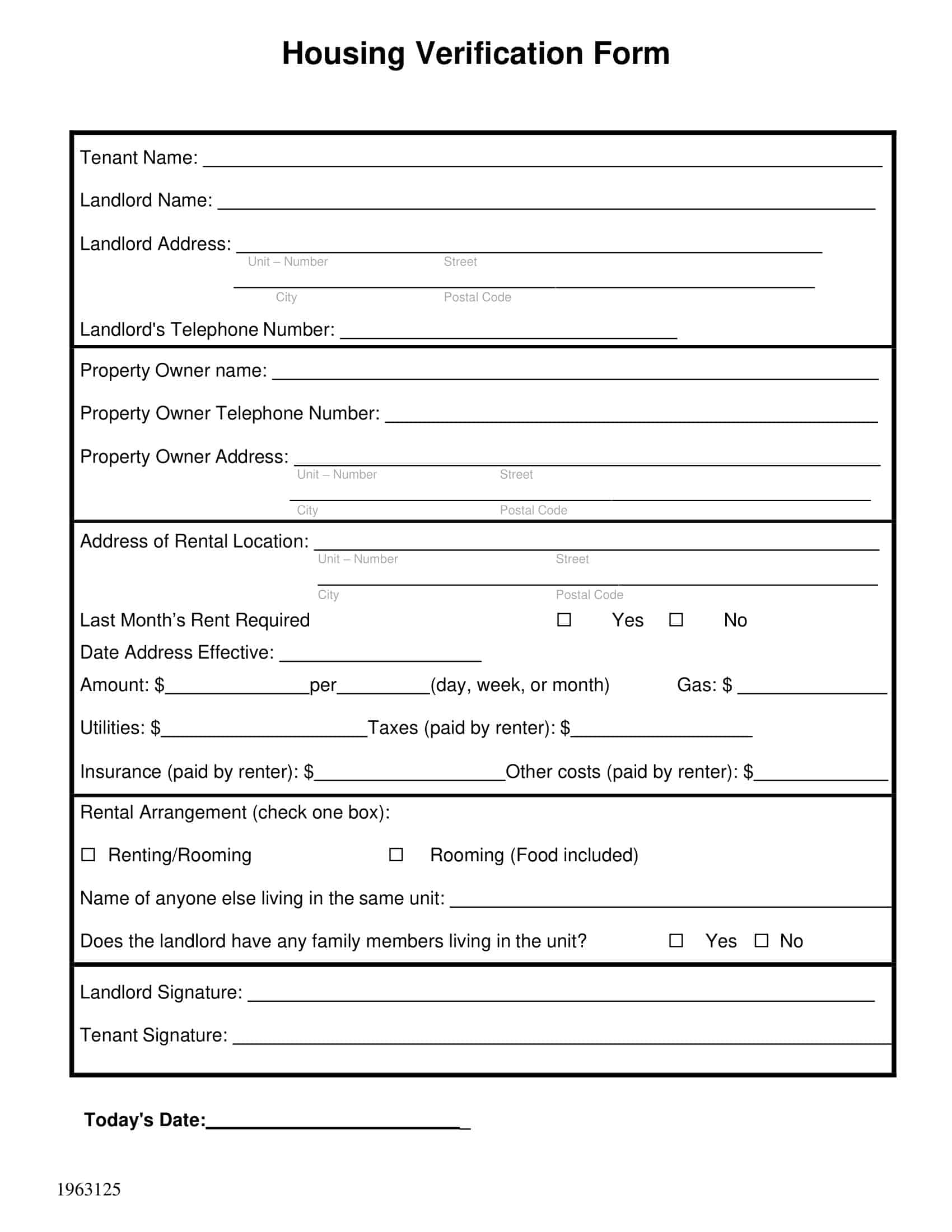








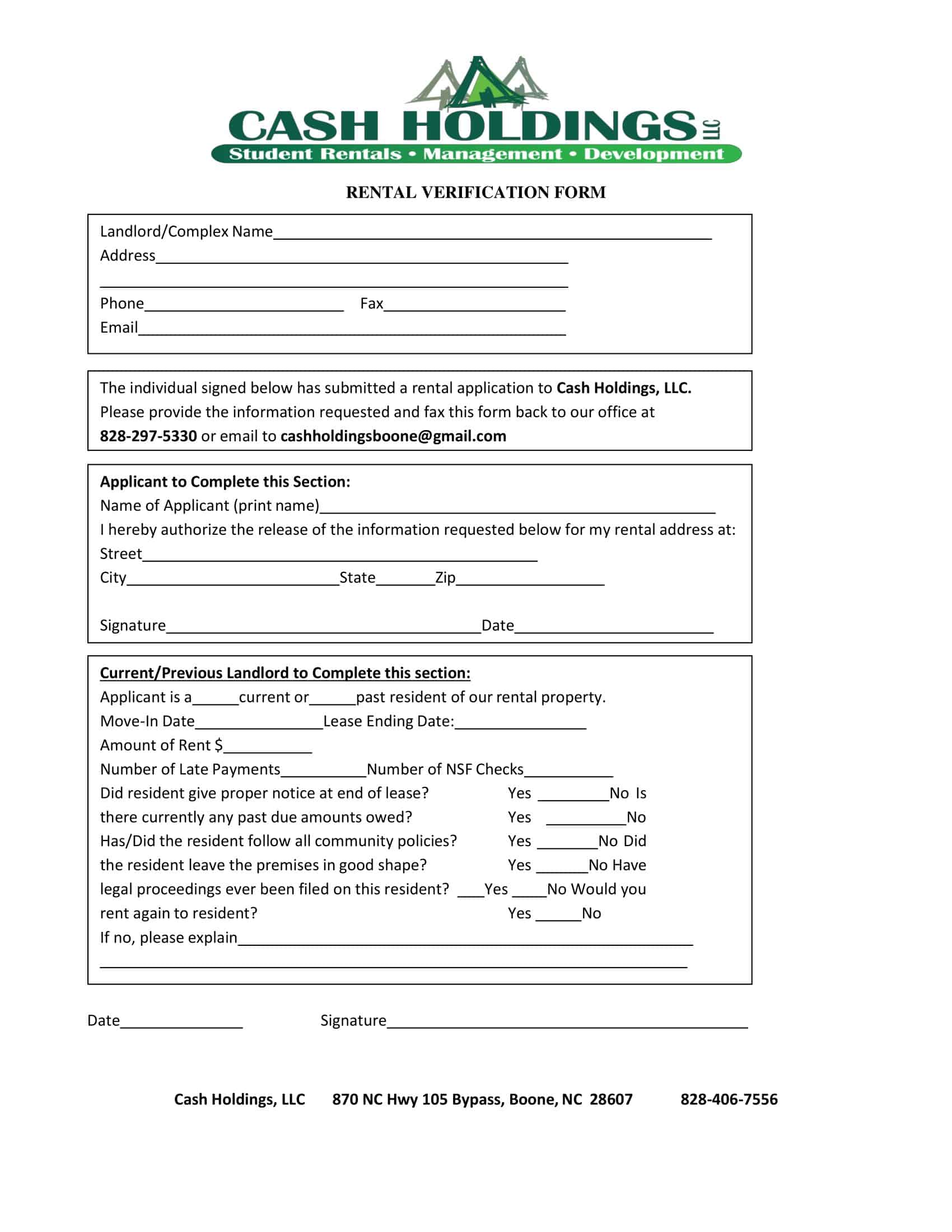







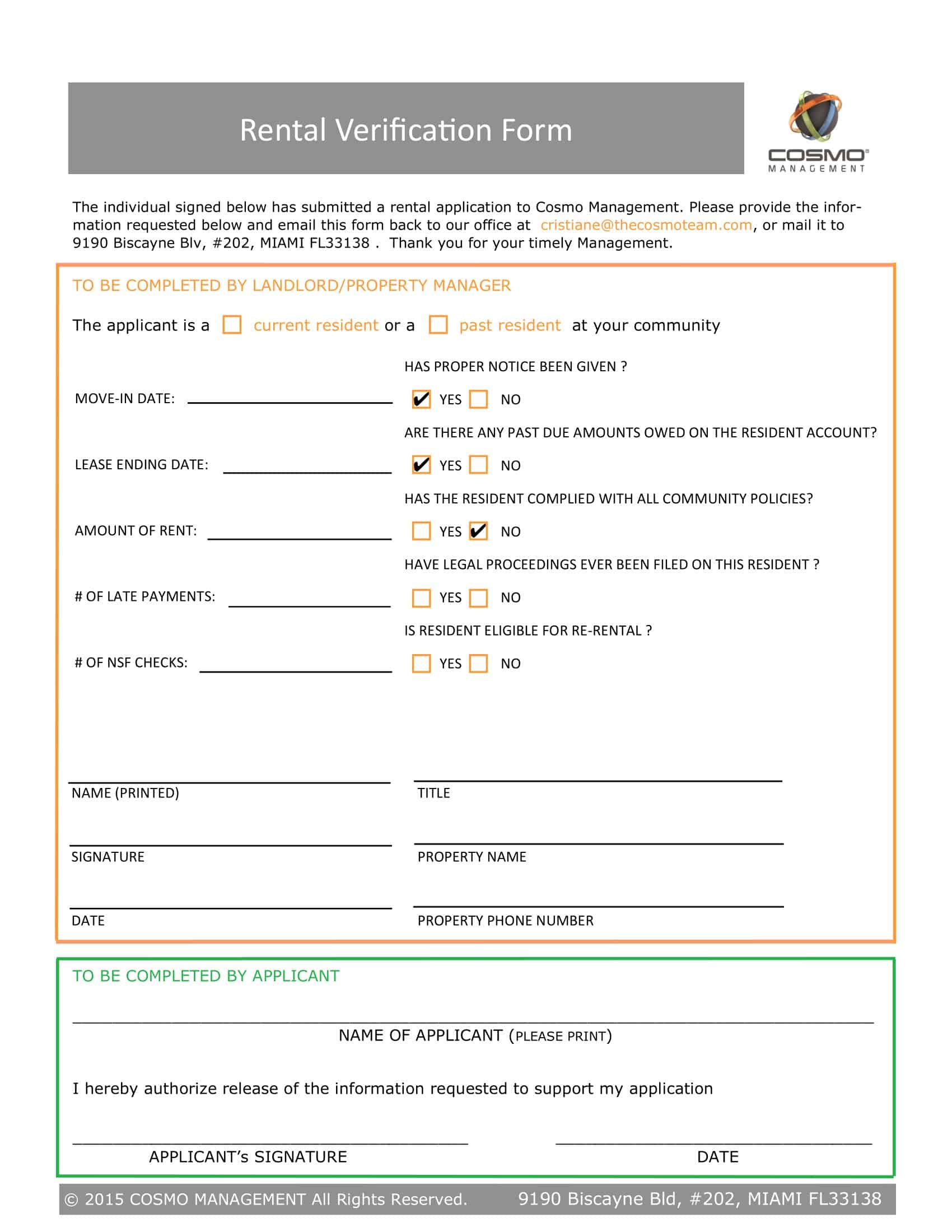

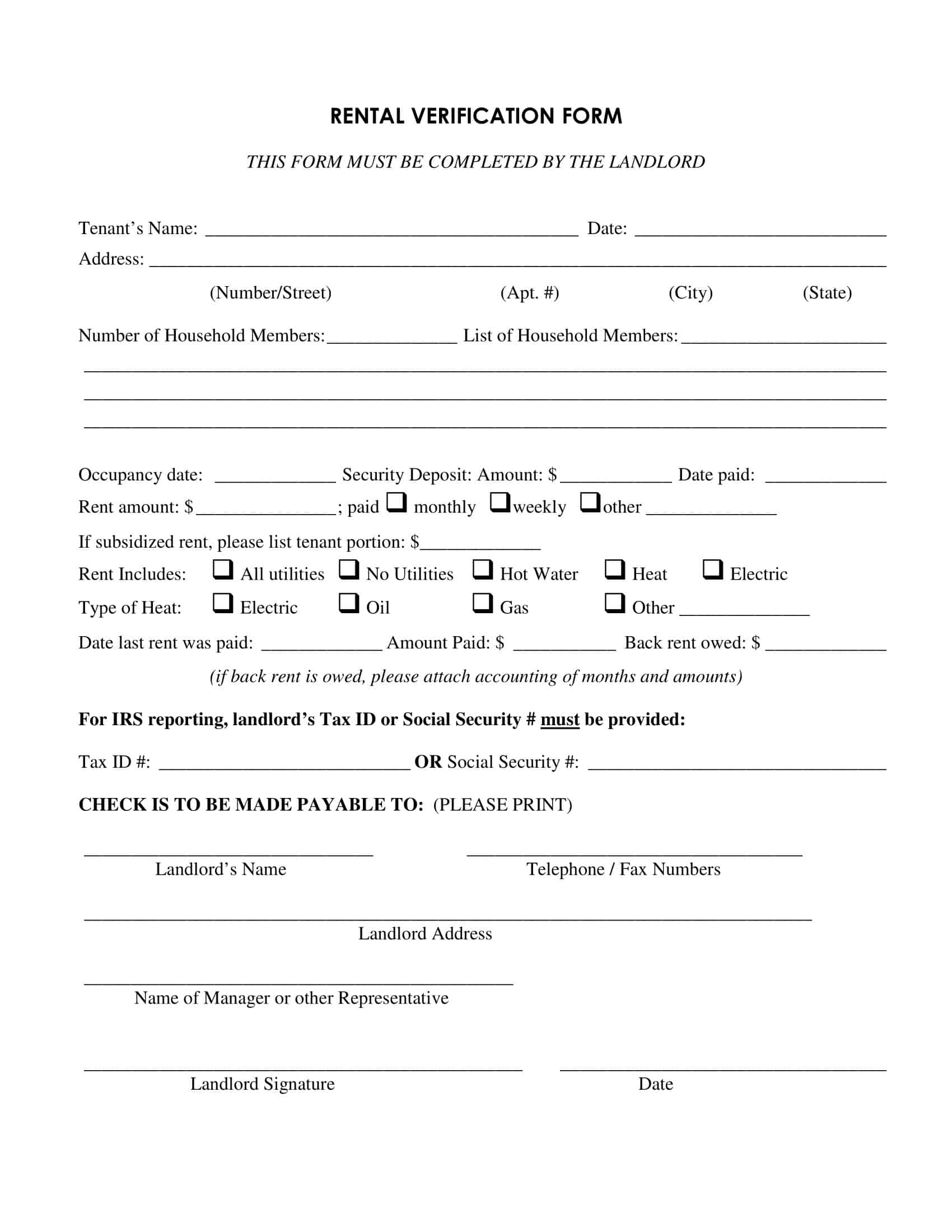

![Free Printable Location Release Form Templates [PDF, Word] Property / Example 1 Location Release Form](https://www.typecalendar.com/wp-content/uploads/2023/05/Location-Release-Form-1-150x150.jpg)
![Free, Printable Car Rental Agreement Templates [PDF, Word] 2 Car Rental Agreement](https://www.typecalendar.com/wp-content/uploads/2023/05/Car-Rental-Agreement-1-150x150.jpg)
![Free Printable Talent Release Form Templates [PDF, Word, Excel] 3 Talent Release Form](https://www.typecalendar.com/wp-content/uploads/2023/05/Talent-Release-Form-1-150x150.jpg)
